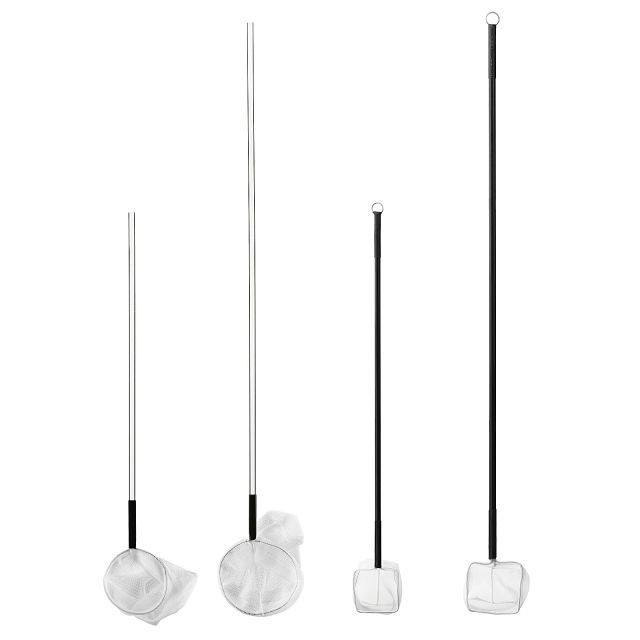Colorful dwarf shrimp have been inspiring aquarists for several years, especially those owning a so-called nano aquarium. These smaller tanks, with a volume less than a standard 54-liter aquarium, are great for keeping those tiny pets and watching them bustle. Especially as a beginner, however, one should pay attention to some things that are important for the keeping of shrimp. We have compiled a little guide showing an overview of the most important products for shrimp.
Filters
In order to keep the water as low in pollutants as possible, biological filtration is particularly important. This means that the filter materials should provide enough surface area to provide sufficient colonization room for pollutant degrading bacteria. In principle, the standard equipment of, for example, an external filter is sufficient for this purpose. Do you want to increase the biological filter performance, heavy-duty filter media such as JBL Micromec or the Oase Hel-X 13 BioMedium are the way to go.

For the successful breeding of dwarf shrimp, it must be ensured that the tiny, tiny offspring is kept from being sucked into the filter pump. For this purpose it is possible to equip the most common external filters with a filter guard, and internal filters can be made save for baby shrimp by installing close-meshed foam. You can find more information about intake protection here.
Tank
Dwarf shrimp can be kept in small nano aquariums. Due to the sometimes quite rapid reproduction of the animals, the tank size should not be too small. Especially popular are cubes with about 20 to 30l in volume. Complete sets are well-suited for shrimp keeping, and in addition to the actual aquarium also contain a filter and lighting.
The Flexi-Mini scape set or the Dennerle Scaper's Tank Complete are recommended sets.
Lighting
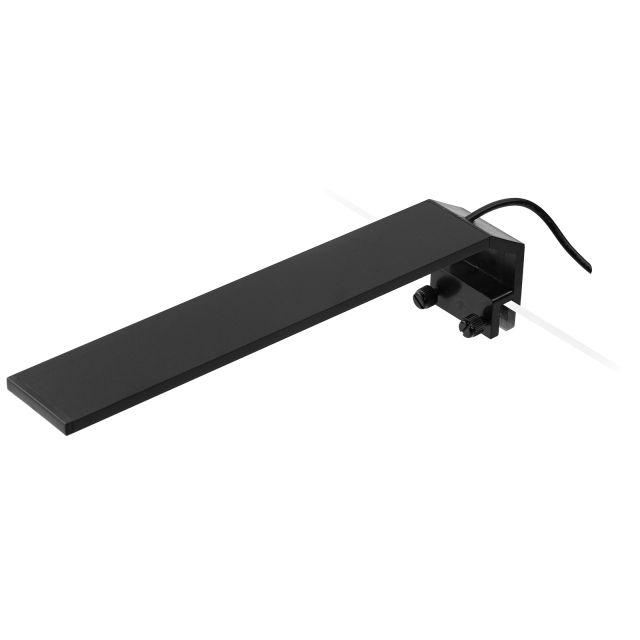
Shrimp don’t need particularly strong lighting. That would be more important for the aquatic plants and their needs. On the contrary: With insufficient hiding places, shrimp feel rather unwell under too intense lighting conditions, they’ll get reclusive and some species may tend to show paler colors. So it should be made sure, that there is always enough refuge provided by plants and decoration. Often, the standard lights, which are included in a complete set, are enough for less demanding plants. However, if you want to keep more demanding aquatic plants, you should think about increasing the lighting.
Substrate

Especially the popular Red Bee Shrimp (Caridina logemanni) prefer acidic, soft water. So active soils, keeping both, pH-value and carbonate hardness low, are the standard substrate for soft water shrimp-keeping. Soil also has a positive effect on the growth of aquatic plants and enriches the water with humic and fulvic acids.
However, shrimp of the species Neocaridina can also be kept in harder water. A neutral substrate can be chosen, such as the mostly-used sands and gravels.
Decoration
Many easy-to-keep plants are available for a shrimp tank. These don’t only serve pure decoration purposes, but provide hiding places and retreats as well as grazing areas for food intake. Mosses are predestined for that. Their fine-fronded thicket is especially popular among young shrimp.

Stones and driftwood are ideal for a natural design and structuring of a shrimp tank. In addition, we also offer special hiding places such as shrimp homes made of ceramics. These can be superbly grassed with mosses.
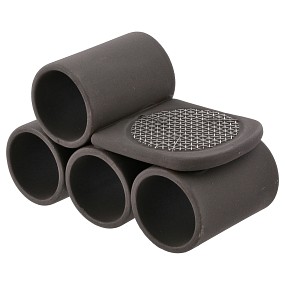
Food
For a wholesome shrimp diet you should ensure a varied feeding. We have many types of food available in our shop. Feeding dishes made of glass are recommended to prevent leftovers of food to sink into the substrate and decompose there. These are just placed on a hard surface somewhere on the substrate. A feeding tube made of glass makes it easy to put food into the feeding dish. Uneaten leftovers can also be sucked away with it, too, to keep the water from being further polluted by organic waste.
Water conditioning
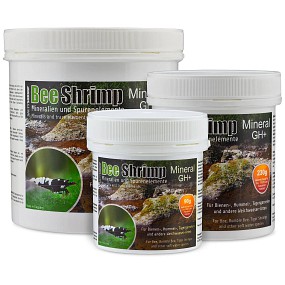
Various tailor-made hardening salts are available for different shrimp. These serve the purpose of demineralized water treatment, from e.g. an osmosis system or a demineralizer. They push the hardness parameters (total and carbonate hardness) to ideal values for the respective shrimp species. In addition, the water is enriched with trace elements, which are important for the health of the aquarium inhabitants. Aquatic plants and useful bacteria benefit from this as well. This ensures a stable eco system in the aquarium.
Other technology and accessories
Temperature

Save for a few exceptions, dwarf shrimp do not need tropical temperatures. Their tolerance range is quite wide, from about 18-27°C. Therefore, an unheated aquarium is usually sufficient if the room temperature does not deviate too much from that. Natural fluctuations in the course of the day, but also seen over the year, are quite desirable and promote the health of the animals. Monitoring the temperature using a thermometer is recommended in any case. A small heater for those chilly winter months and maybe a cooler for the summer definitely make sense as an emergency measure.
Oxygen
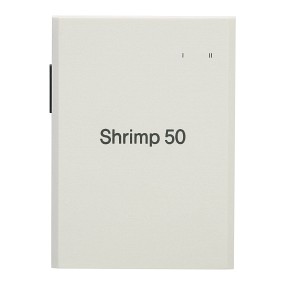
Purifiers such as the Söchting Oxydator or a Twinstar Shrimp have been tried and tested and are pretty popular in the shrimping community. These devices ensure particularly clean and germ-free water and enrich it with active oxygen. Due to their small size, they don’t stand out too much.
Fish nets
To catch shrimp from different age groups, small, close-meshed nets are well-suited especially in planted nano aquariums. Above all, those with breeding ambitions, wanting to select shrimp by pattern and color, won’t want to miss the much better handling with the special shrimp nets.
